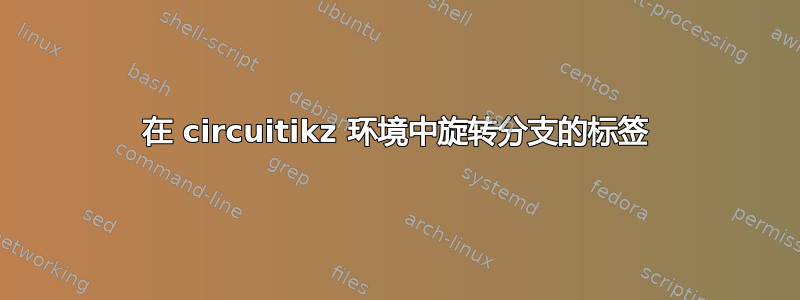
请考虑以下 MWE:
\documentclass[border={1mm}]{standalone}
\usepackage[europeanresistors]{circuitikz}
\begin{document}
\begin{circuitikz}
\draw (0,0)to [R,o-,a=$+\;\; v_1\;\; -$](4,0);
\draw (4,0)to [R,o-,a=$+\;\; v_2\;\; -$](4,4);
\draw (4,4)to [R,o-,a=$+\;\; v_3\;\; -$](0,4);
\draw (0,4)to [R,o-,a=$+\;\; v_4\;\; -$](0,0);
\end{circuitikz}
\end{document}
这是输出:
如何旋转标签 v_2 和 v_4?这是首选输出:
答案1
如果你真的喜欢它... ;-)
请注意,您必须使用大量的{{{来保护的可选参数rotatebox。但我仍然更喜欢标准电压方式......
\documentclass[border={1mm}]{standalone}
\usepackage[europeanresistors, americanvoltages, RPvoltages]{circuitikz}
\begin{document}
\begin{circuitikz}
\draw (0,0)to [R,o-,a=$+\;\; v_1\;\; -$](4,0);
\draw (4,0)to [R,o-,a={{{{\rotatebox[origin=c]{-90}{$+\;\; v_2\;\; -$}}}}}](4,4);
\draw (4,4)to [R,o-,a=$+\;\; v_3\;\; -$](0,4);
\draw (0,4)to [R,o-,a={{{{\rotatebox[origin=c]{-90}{$+\;\; v_4\;\; -$}}}}}](0,0);
\end{circuitikz}
\begin{circuitikz}[voltage shift=1]
\draw (0,0)to [R,o-,v=$v_1$](3,0)
(3,0)to [R,o-,v<=$v_2$](3,3)
(3,3)to [R,o-,v>=$v_3$](0,3)
(0,3)to [R,o-,v=$v_4$](0,0);
\end{circuitikz}
\end{document}





